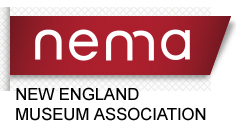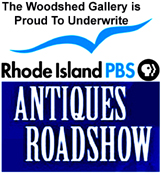Scientific Examinations of Art for Authentication & Attribution
Identification of pigments & media, dating of materials, and specific wavelength imaging can reveal an artwork’s history, and sometimes lead to confirmation of authenticity.
Our non-invasive testing methods assure that your artworks are not altered.
-Bruce Wood, MFA, Member of the International Institute for Conservation of Historic and Artistic Works.
Open By Appointment, Wednesdays thru Saturdays. Phone 508-533-6277
The attribution or authenticity of a work of art depends in part on the materials and techniques of the work being appropriate for the artist and the age of the piece.
To discover and confirm aspects of an artwork which may be in question, we use scientific technology and apparatus to conduct forensic art examinations.
However, simply identifying materials is rarely sufficient to provide an attribution. To place such analytical results into their proper historical framework, we research extensive knowledge bases of past materials and artists’ practices. Then we add art historical research into the artist, comparing our subject artwork to known examples of the artist’s work.
Combining the scientific evidence with subjective connoiseurship may lead to surprising discoveries and attribution.
The techniques available for analysis of paintings and drawings are:
- Near Infrared (NIR) Spectroscopy, is used to identify pigments and binders in ink and paint. It is also used to provide an age date for paper and wood. We have developed an extensive proprietary database of paper samples and historic pigments for spectral comparisons.
- Infrared Reflectance Photography allows us to see under-drawings and to discover composition changes which are not evident in normal lighting conditions.
- Infrared Transmission Photography allows us to see through the canvas. This technique often reveals inscriptions hidden by restorative linings, and can discover old condition problems hidden by retouching.
- Ultraviolet (UV) Photography reveals modern additions to an oil painting It can detect retouching, repairs and old and new varnish layers. UV can also help in detecting the age and condition of paper, and reveal transparent sizing and glazes on paper.
- Raman Spectroscopy is a laser-based method for identifying some pigments.
- X-Ray Fluorescence (XRF) Spectroscopy is an x-ray based method for identifying the chemical elements of paint and non-organic materials.
- Microscopy is used to examine paint layers, paper composition, and other elements requiring the special view which magnification provides.
Contact us to discuss how forensic analysis of your artwork may help advance its appreciation, marketability and value.



Oil Painting Restoration and Repair for Franklin, Medway, Walpole, Bellingham, Norfolk, Foxboro, Mendon, Hopedale, Millis, Milford, Holliston, Westwood, Dover, Dedham, Wellesley, Providence, Boston, Cape Cod, Concord, Pawtucket, Woonsocket, Attleboro, Warwick, Grafton, Uxbridge, Upton, Cambridge, Holliston, Sherborn, Natick, Framingham, Worcester, Marlborough, Wayland, Weston, Gloucester, Newburyport, Peabody, Cohasset, Needham, Waltham, Lincoln, Sudbury, Ashland, Massachusetts Rhode Island, New Hampshire, Vermont, Connecticut and Maine.